Personal Finance
Advice about 401(k) rollovers is poised for a big change. Here’s why
Published
3 weeks agoon

Johner Images | Johner Images Royalty-free | Getty Images
A new U.S. Labor Department rule will significantly change the advice many investors receive about rolling money over from 401(k) plans to individual retirement accounts, legal experts say.
The so-called “fiduciary” rule, issued April 23, aims to raise the legal bar for brokers, financial advisors, insurance agents and others who give retirement investment advice.
Such recommendations may be tainted by conflicts of interest under the current rules, the agency says.
Rollovers are undoubtedly a “chief focus” of the regulation, said Katrina Berishaj, an attorney at Stradley Ronon Stevens & Young.
“The Department of Labor was not shy about that,” said Berishaj, co-chair of the firm’s fiduciary governance group.
Millions of investors roll over funds each year
Rollovers are common, especially for retiring investors.
They often involve moving one’s nest egg from a 401(k)-type plan to an IRA.
In 2022, Americans rolled over about $779 billion from workplace retirement plans to IRAs, according to a Council of Economic Advisers analysis. Almost 5.7 million people rolled over money to an IRA in 2020, according to most recent IRS data.
The number and value of those transactions have increased significantly as more baby boomers enter their retirement years. In 2010, for example, about 4.3 million people rolled over a total of $300 billion to IRAs, according to the IRS.
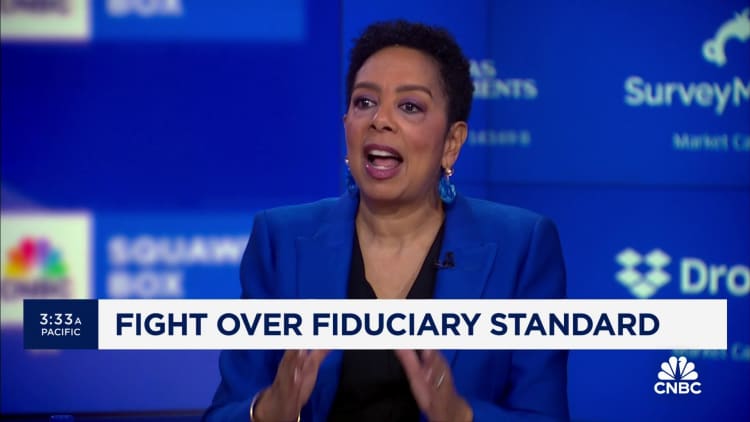
A ‘major shift’ in rollover advice
The new Labor Department rule aims to make more investment recommendations “fiduciary” in nature.
A fiduciary is a legal designation. At a high level, it requires financial professionals to give advice that puts the client first. They have an obligation to be prudent, loyal and truthful when giving advice to clients, and to charge reasonable fees, experts said.
Today, many rollover recommendations aren’t beholden to a fiduciary standard under the Employee Retirement Income Security Act, attorneys said.
Labor officials fear that exposes investors to conflicts of interest, whereby advice may not be best for the investor but earns brokers a higher commission, for example.
If the past is any indication of the future, we can anticipate millions of rollovers each year.
Katrina Berishaj
attorney at Stradley Ronon Stevens & Young
Under the current legal rules, which date to the mid-1970s, a financial agent must satisfy five prongs to be considered a fiduciary.
One of those prongs says they’re a fiduciary if they provide advice on a regular basis, attorneys said.
However, many rollover recommendations don’t happen as part of an ongoing advice relationship. Instead, it’s often a one-time occurrence, attorneys said.
That means it’s “very unusual” for a rollover recommendation today to be beholden to a fiduciary standard, Reish said.
The new Labor Department rule changes that, however.
“Under this rule, one-time investment advice to roll assets out of a plan would trigger fiduciary status under ERISA,” said Berishaj, who called the change a “major shift.”
Why rollover advice may be ‘higher-quality’
Under the new rule, advisors would generally be expected to consider factors such as alternatives to a rollover, including the pros and cons of keeping money in a 401(k) plan, Berishaj said.
For example, they’d likely compare various fees and expenses of a workplace plan vs. an IRA, as well as the services and investments available in both. They’d also provide certain disclosures to investors prior to the rollover, such as a description of the basis for that rollover recommendation, she added.
Good advisors are likely making an honest effort to do what’s best for their clients, but hopefully the Labor Department rule would “bring up the bottom to a better quality,” Reish said.
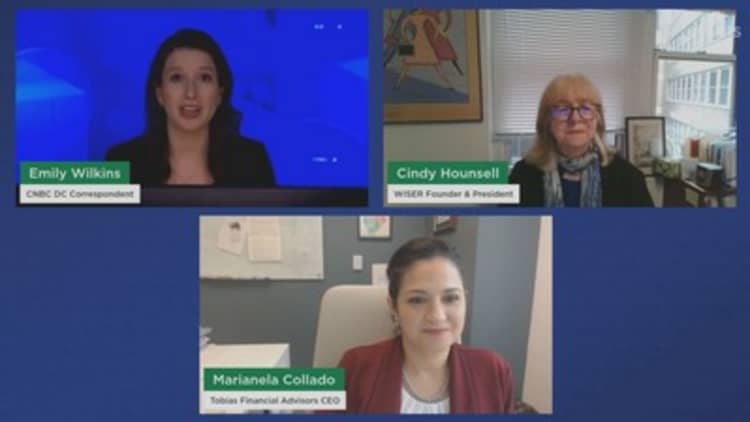
“I think the DOL’s intent is to encourage higher-quality advice, which would get people both better invested and with lower cost,” Reish said.
However, many financial companies dispute the necessity of the Labor Department rule.
For example, the regulation will “harm retirement savers and their access to the professional financial guidance they want and need,” said Susan Neely, president and CEO of the American Council of Life Insurers, an insurance industry trade group.
Additionally, the Labor Department “has chosen to ignore the significant progress made to strengthen consumer protections” over the last several years, Neely said. They include rules issued by the Securities and Exchange Commission and National Association of Insurance Commissioners.
Reish said those rules are “all less demanding than the DOL rule,” Reish said. “So, it’s a higher standard across the board.”
That’s especially true of recommendations from insurance agents to roll money from a 401(k) plan to an annuity held in an IRA, due to differences in current legal rules versus the Labor Department requirements, according to attorneys and other financial experts.
“We believe insurance agents will be most exposed to this rule, especially those who sell annuities,” Jaret Seiberg, financial services analyst for TD Cowen Washington Research Group, wrote in a recent research note.
Industry groups will likely sue to block the rule from taking effect, he said.
You may like
Personal Finance
Here are key things to know about company stock, experts say
Published
2 weeks agoon
May 4, 2024
Prasit photo | Moment | Getty Images
As employers compete to attract and retain talent, equity compensation — or an ownership stake in the company — has become a key workplace benefit.
Some 72% of companies offer some form of equity compensation to certain employees, a 2023 survey from Morgan Stanley found. That’s up from 65% in 2021.
These perks motivate employees and boost their long-term investing goals, according to the Morgan Stanley survey, which polled 1,000 U.S. employees and 600 human resource executives.
However, some “miss the opportunity” because they don’t understand it, said certified financial planner Chelsea Ransom-Cooper, chief financial planning officer for Zenith Wealth Partners in New York.
More from Personal Finance:
This job perk is like a ‘cash bonus’ — but you need a long-term strategy, experts say
Employee stock purchase plans offer ‘free money’ — but also carry complexity and risk
Treasury Department announces new Series I bond rate of 4.28% for the next six months
Here’s what to know about three popular types of stock-based compensation, experts say.
There’s potential for ‘life-changing wealth’
Many employees receive so-called stock options as part of their compensation, which are the right to buy or “exercise” company shares at a preset price within a specific timeframe.
“It’s almost iconic to grant stock options in a startup private company,” said Bruce Brumberg, editor-in-chief and co-founder of myStockOptions.com, which covers various types of equity compensation.
Startups want to create the drive and incentive of ownership culture with the potential for “life-changing wealth,” he said.
Stock options become valuable when there’s a discount between your preset price and the market value, which makes it more attractive to exercise. However, the taxes can be complicated, depending on the type of stock options.
Incentive stock options can offer some tax benefits — if you meet certain rules — but could trigger the alternative minimum tax, a parallel system for higher earners.
Photo by LanaStock via Getty Images
By comparison, the more common nonqualified stock options generally have less favorable tax treatment and you’ll owe regular income taxes on the discount upon exercise.
But even with an initial discount, there’s no guarantee a company’s stock price won’t decrease after exercising a stock option.
“It could be worth nothing but a piece of paper,” Ransom-Cooper from Zenith Wealth Partners said.
Restricted stock units are ‘like a cash bonus’
Another benefit, restricted stock units, or RSUs, are company shares granted upon hiring, which vest over time. RSUs can also be tied to performance-based goals.
Some 94% of public companies offer RSUs to at least middle managers, according to a 2021 survey from the National Association of Stock Plan Professionals.
“I like to think of it like a cash bonus,” said Pittsburgh-based CFP Matthew Garasic, founder of Unrivaled Wealth Management.
I like to think of it like a cash bonus.
Matthew Garasic
Founder of Unrivaled Wealth Management
For example, if the stock price is $10 and 100 shares vest, it’s treated like $1,000 in compensation for that year, and the standard withholding of 22% might not be enough, depending on your tax bracket, he explained.
After vesting, the decision to sell or hold RSUs depends on your short- and long-term investing goals.
“We like to establish a target of what they like to hold in company stock,” said Garasic, who aims to keep allocations of a single stock to 10% or less. “Once we get above that target, we just sell at vest.”
Employee stock purchase plans offer ‘free money’
Many publicly traded companies may also offer discounted company shares via an employee stock purchase plan, or ESPP.
“There’s free money to be had” with an ESPP, Garasic explained.
However, the decision to participate typically depends on your short-term financial goals.
After enrolling, your ESPP collects a portion of after-tax money from each paycheck and uses the funds to buy discounted company stock on a specific date.
The gold standard is a 15% discount with a lookback feature, which bases the stock purchase price on the value at the beginning or end of the offering period, whichever is lower, experts say.
Any time you’re investing in a single company, there’s certainly a big risk.
Kristin McKenna
President of Darrow Wealth Management
You can typically sell after a set period, but there’s no guarantee you’ll make money, even with the built-in discount.
“Any time you’re investing in a single company, there’s certainly a big risk,” CFP Kristin McKenna, president of Darrow Wealth Management in Boston, previously told CNBC.
Yearly goals like investing up to your employer’s 401(k) match should come before your ESPP, especially with limited income, she added.
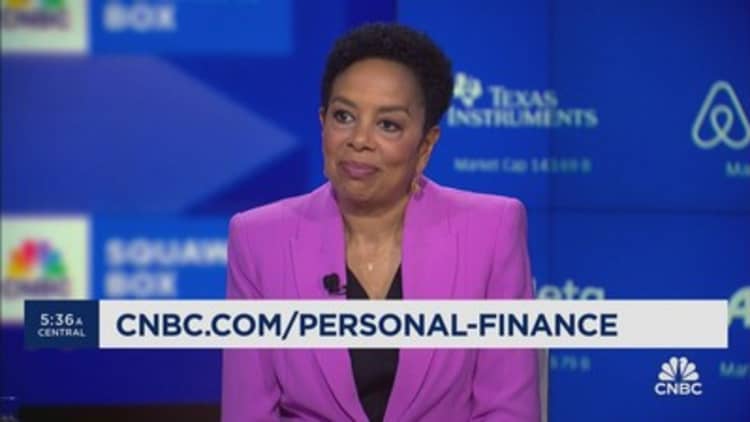
Personal Finance
Public Service Loan Forgiveness program will go on partial pause
Published
2 weeks agoon
May 3, 2024
Teacher teaching her students in art class at school.
Fg Trade | E+ | Getty Images
The popular Public Service Loan Forgiveness program began a partial processing pause on May 1, which will likely run through July, the U.S. Department of Education recently said.
The temporary suspension comes as the Biden administration overhauls the once-troubled federal student loan program.
Here’s what borrowers should know.
Why the pause is happening
The PSLF program, signed into law by President George W. Bush in 2007, allows certain not-for-profit and government employees to have their federal student loans canceled after 10 years of on-time payments.
However, the program has been plagued by problems, making people who actually get the relief a rarity.
Borrowers often believe they’re paying their way to loan cancellation only to discover at some point in the process that they don’t qualify, usually for confusing technical reasons. Lenders have been blamed for misleading borrowers and botching their timelines.
More from Personal Finance:
Advice about 401(k) rollovers is poised for a big change. Here’s why
IRS free filing pilot processed more than 140,000 returns, commissioner says
Here’s why new home sales inch higher despite 7% mortgage rates
The Biden administration has been trying to reform the program. As part of that overhaul, it is changing how loan servicing works for public servants, and some of the customer service will soon be handled by the government itself.
“After the improvements, PSLF borrowers will have all of their PSLF information centralized on StudentAid.gov so that the Department can provide real-time and more accurate information on payment counts and form processing,” the Education Department wrote in a recent blog post.
Previously, only one company managed the servicing for PSLF borrowers on behalf of the government: first, FedLoan, and more recently, Mohela, or the Missouri Higher Education Loan Authority. Going forward, a number of different companies will service the accounts, along with the Education Department.
What borrowers can expect during the transition
The Education Department will not review PSLF form submissions for roughly a two-month period, it says. (The exact dates will depend on how long the changes take place to complete.)
Meanwhile, from May 1 through July, it says, “borrowers will not be able to see their PSLF payment counts on MOHELA’s website.”
“During the transition, PSLF forgiveness will be suspended,” said higher education expert Mark Kantrowitz.
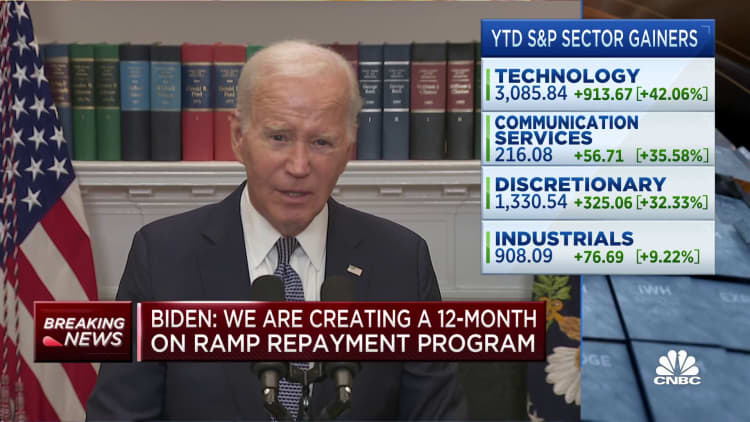
Borrowers will be able to continue making their loan payments, and these months will count on their timeline to loan forgiveness. Borrowers should also be able to submit a form to certify public service employment and to apply for loan forgiveness if they are at the 10-year mark.
“Forms will be reviewed as soon as the transition is complete,” the Education Department says.
If you qualify for debt cancellation during the transition, you can request a forbearance from your servicer in the meantime, it says, adding that any overpayments should be refunded.
Don’t miss these exclusives from CNBC PRO
Personal Finance
Your Roth 401(k) after-tax matching contribution could trigger taxes
Published
2 weeks agoon
May 3, 2024
If you’ve opted into your employer’s Roth 401(k) after-tax matching contributions this year, it could trigger a tax surprise without proper planning, experts say.
Enacted in 2022, Secure 2.0 ushered in sweeping changes for retirement savers, including the option for employers to offer 401(k) matches in Roth accounts. These accounts are after-tax, meaning employees pay upfront taxes but growth and withdrawals in retirement are tax-free. Previously Roth 401(k) matches went into pretax accounts.
Roughly 12% of employers with 401(k) plans said they are “definitely” adding the feature and 37% are “still considering it,” according to a recent survey from the Plan Sponsor Council of America.
However, those new matching Roth contributions could have “unintended consequences” at tax time, according to Tommy Lucas, a certified financial planner and enrolled agent at Moisand Fitzgerald Tamayo in Orlando, Florida.
More from Personal Finance:
IRS aims to more than double its audit rate on wealthiest taxpayers
Here are three ways to lower your credit card annual percentage rate, experts say
Why your financial advisor may not give you the best Social Security advice
“If you go this route, you’ll want to know that you’re basically getting extra income” and taxes aren’t automatically withheld, Lucas said.
“You’re increasing your adjusted gross income by taking this match as a Roth,” he said.
“If you go this route, you’ll want to know that you’re basically getting extra income.”
Tommy Lucas
Financial advisor at Moisand Fitzgerald Tamayo
For example, let’s say your salary is $100,000 with a 6% employer match in 2024. If you designate your $6,000 employer match as Roth and you’re in the 22% federal income tax bracket, you could have an extra $1,320 in tax liability, according to Lucas.
“There’s probably something on top of that for state income taxes,” depending on where you live, he said.
Plus, you won’t see your employer’s matching Roth contribution reported on Form W-2, according to IRS guidance released late last year. Instead, you’ll receive Form 1099-R, which could be confusing, Lucas said.
How to plan for income from Roth 401(k) matches
If you’ve chosen your company’s Roth matches for 2024, you need to prepare for the extra income, said CFP Jim Guarino, managing director at Baker Newman Noyes in Woburn, Massachusetts. He is also a certified public accountant.
You can increase your federal and state withholdings with your employer or boost your quarterly estimated tax payments, he said.
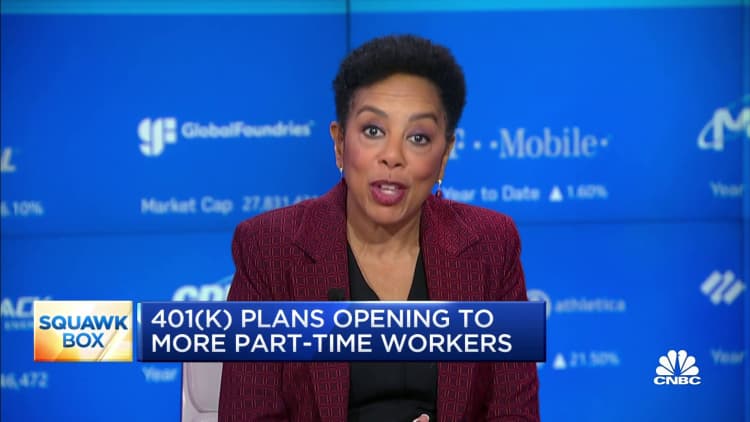
For example, if you expect to incur $1,320 more in federal taxes, you could divide that amount by your remaining 2024 paychecks and include that “extra withholding” on Form W-4 for your employer, Lucas said.
Of course, you’ll need to double-check that the change is reflected on future paychecks, he said.
“In either case, working with a trusted tax advisor would help to optimize overall tax planning and eventual tax reporting for the year,” Guarino added.
Don’t miss these exclusives from CNBC PRO

Betting on the Kentucky Derby? Here’s how to think like a professional handicapper.

Warren Buffett says Greg Abel will make Berkshire Hathaway investing decisions when he’s gone

EV makers win 2-year extension to qualify for tax credits

Are American progressives making themselves sad?

‘Best Firms for Tech’ 2024 deadline extended to April 10

